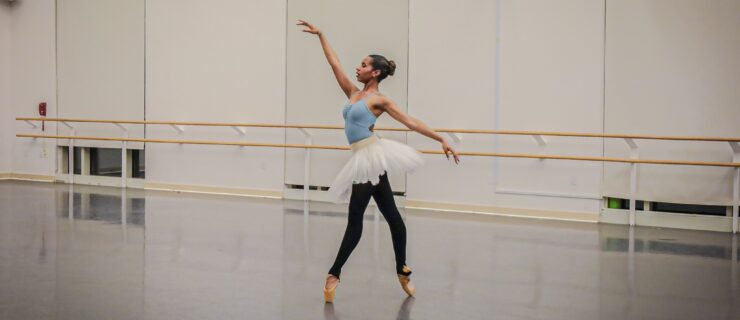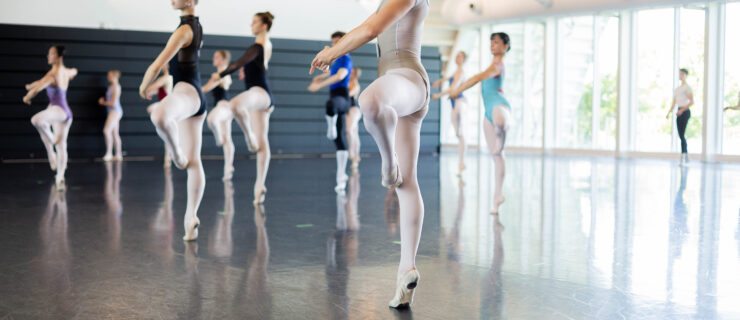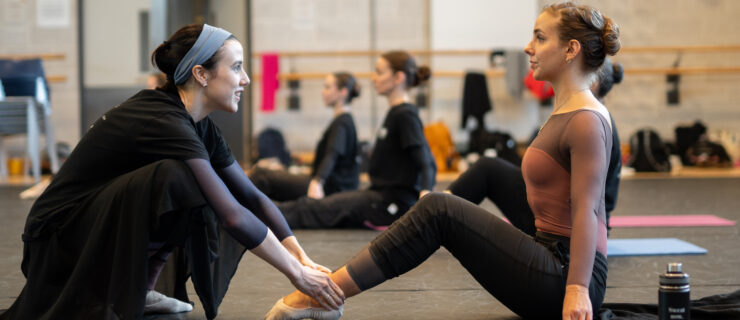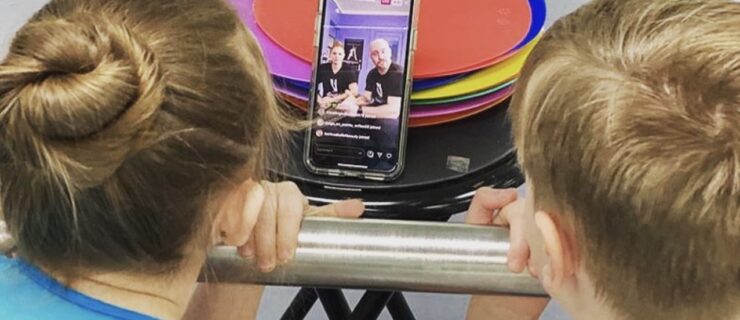Let's Hear It for the Boys: Why More Schools Are Offering Men's Training Programs
As a teenager, Adrian Durham studied at his local ballet school in Lake Charles, Louisiana. “I was one of three or four guys training there, and there were no male teachers,” says Durham. “Most of my partnering experience came from rehearsals for performances.” But after he began training with the male scholarship program at Central Pennsylvania Youth Ballet in 2014, he experienced a sea change. “It challenged me mentally, physically and emotionally, because it’s such an intense program,” he says. Now 20, he is preparing for a professional career with an integrated set of tools: ballet technique, physical strength and partnering skills.
Men’s ballet technique classes have been available for decades, especially at summer intensives and urban ballet schools. Yet programs designed specifically for male dancers, often offering full scholarships, have been rarer—until now, that is. Training that allows boys to separately explore their skills, above and beyond a supplement of double tours en l’air and pirouettes à la seconde at the conclusion of a mixed class, can literally give young men a leg up as they aspire towards a dance career.
Why the Need?
To work professionally, young men have to demonstrate a full range of technical skills, especially in jumping and turning and through a firm grasp of styles and partnering. “Today, boys are expected to be much more flexible and physically fit than they were 20 years ago,” says Peter Stark, who joined the Boston Ballet School faculty in 2015 to shape a comprehensive men’s program, in which 72 percent of students are on scholarship. Simon Ball, who directs the men’s program at CPYB, agrees. “You’re not exceptional if you can do a double tour from fifth to fifth,” he says. “That’s the bare minimum.”
 Simon Ball instructing CPYB student Braden Hart. Photo by Rosalie O’Connor, Courtesy CPYB.
Simon Ball instructing CPYB student Braden Hart. Photo by Rosalie O’Connor, Courtesy CPYB.
For smaller schools and companies, initiating a men’s ballet program also helps to recruit boys and educate communities. Nick Mullikin, the director of the School of Nashville Ballet, saw a shortage of boys in his school, mostly due to the stigma of young men studying ballet. In response, he launched a young men’s scholarship program last August that currently serves 40 male students, ages 6 to 18. Boys receive a year of free training; subsequent scholarships are merit-based. “Coed classes sometimes put boys in a ratio of 20 to 1,” says Mullikin. “It’s great when there are other boys in class; it helps to build a sense of teamwork. It’s important for young men to have that kind of support.”
In addition, getting proper training during the early teen years is crucial. “At the onset of puberty, which is when girls are going on pointe—that’s when it’s nice to separate the boys out,” says Stark, so that both groups have time to pursue specialized training. In his experience, Ball has seen that boys can succeed in their teens, but acknowledges that the path is generally easier at a younger age to ingrain the focus, discipline and muscle memory.
What’s Different?
Men’s programs, often led by male teachers with professional experience, offer more specialized training. Even barre exercises often need to be adapted. “I think it’s really essential for men to get down into the floor for their preparations and jumps,” says Ball, who emphasizes the full value of the plié and the push required to spring off the floor in his classes. He also frequently gives combinations that move side to side to help students feel their backs and coordinate their jumps, rather than move in pieces.
Partnering proficiency doesn’t manifest magically, so constant practice through weekly adagio classes is necessary to prepare men to work professionally. Many programs also implement cross-training to develop upper-body strength and stamina. CPYB two-year male scholarship boys go to a gym twice a week to work with a trainer for core and upper-body strength, while Nashville Ballet and Boston Ballet schools work exercises into class. “We do a lot of gym exercises—planks, push-ups and sit-ups, stretching, and running up and down stairs,” says Stark. “Some boys are tighter but stronger, and some are super-flexible but not as strong,” so a mindful approach to each student is crucial.
 Students of Nashville Ballet School. Photo by Karyn Photography, Courtesy Nashville Ballet.
Students of Nashville Ballet School. Photo by Karyn Photography, Courtesy Nashville Ballet.
Male Camaraderie
For a student whose only experience is his hometown school, entering into a new arena of competition can be challenging. Yet most find being in a class of other boys a positive, and it helps diminish the myth that ballet is only for girls. “The teachers encourage you to compare yourself to other dancers in a healthy way: If this person can do it, there’s no reason you can’t do it,” says Durham. “Being around a group of guys working toward the same thing gives you confidence and is very motivating.”
Another unexpected benefit: The discipline, concentration and focus often expand beyond the walls of the studio. “When the boys get together multiple times a week, you see technical improvement, but we’ve also seen the changes in their behavior,” says Mullikin. “We’ve heard from parents that their academic performance in school is better.”
Ball recalls that as a young dancer, he trained with “a handful of men, none my own age.” Now, he says, “I walk into the studio and I continually have to pinch myself because there are 20 to 30 men in the room. I’m so happy with the way things have progressed.”
BONUS TIPS
Are You the Only Guy in Your Class?
If you don’t have access to a men’s program, there are things you can do to progress in your hometown studio:
1. Study videos that show excellent male dancing in performances, classes and rehearsals. “As a kid I had three videos: Baryshnikov’s Don Q and Nutcracker, and New York City Ballet’s The Magic Flute with Ib Andersen,” says Simon Ball, director of Central Pennsylvania Youth Ballet’s men’s program and a former principal with Houston Ballet. “I watched them over and over again.”
2. In your early teens, begin an upper-body strengthening routine, preferably with the help of a professional. Back injuries among young male dancers are common. Core work can begin earlier.
3. Request that your instructor address the differences in men’s and women’s technique, such as male-specific jumps and turns and adjusting tempos during allégro combinations, in class.
4. Ask your local studio to host a guest male instructor who has a background in men’s training.
5. Try to see male dancers in live ballet performances as often as possible. “Anything you can do to see male dancers perform keeps you motivated and gives you something to work towards,” says CPYB student Adrian Durham. —JC





